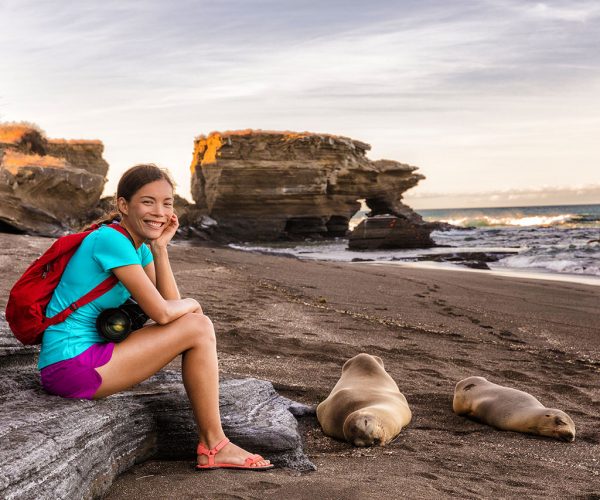GALAPAGOS
General Information
Galapagos is an archipelago located 1,000 kilometers off the Ecuadorian coast; comprised of seven main islands (Isabela, Santa Cruz, Fernandina, Santiago, San Cristobal, Floreana, and Marchena), 14 smaller islands (Spanish, Pinta, Baltra, Santa Fe, Pinzon, Genovesa, Rabida, Seymour Sur, Wolf, Turtuga, Bartholomew, Darwin, Daphne Major and Plaza Sur), 64 islands and 136 rocks.
These land masses in the sea are the result of volcanic eruptions.
Galapagos is known as a volcanic ‘hot spot’.
Biodiversity
One aspect that makes them unique flora and fauna of the archipelago is the existence of species not found anywhere else in the world and whose ancestors arrived from the continent millions of years ago.
Galapagos is known for its numerous endemic species and the studies done by Charles Darwin that led him to establish his theory of evolution.
This extraordinary natural laboratory was declared World Heritage by the UNESCO.
WHEN TO GO TO THE GALAPAGOS ISLANDS
- There is no “wrong” time to visit Galapagos: different times of the year have different things to see and do.
- The warm and wet season lasts from January to June, this season is characterized by daily rains and cloudier skies,warmer temperatures on land and in the sea and it is a perfect time for snorkeling or diving.
- The cold and dry season lasts from July to December and brings cooler water temperatures, so remember to bring your wetsuit. This time you can see daily blue skies, almost no wind, a perfect time for landscaping, air and sea temperature difference creates a layer of mist in the Archipelago sky.

